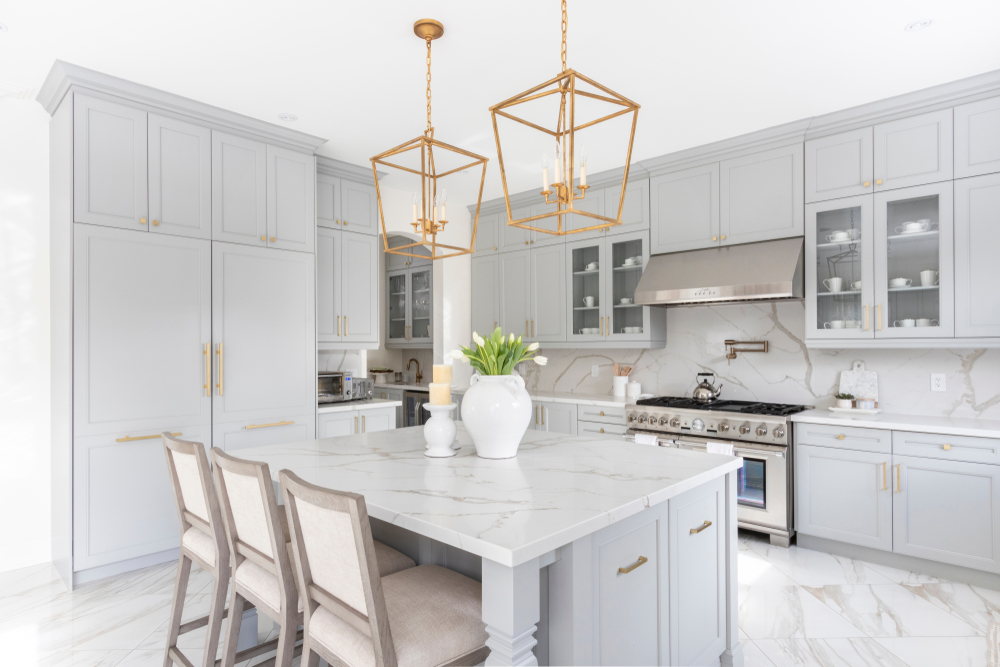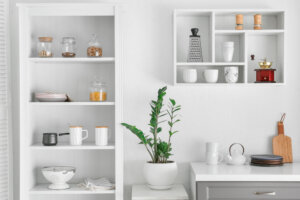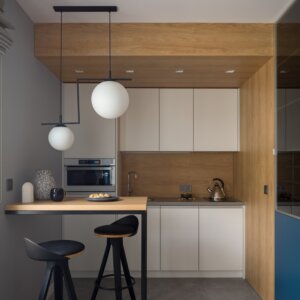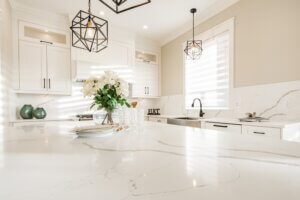You use your kitchen every day for cooking, eating, entertaining, and most importantly, spending quality time with your family. Because this space is so important, kitchen renovations tend to be high-pressure projects. While we can’t promise that you’ll end up with the kitchen of your dreams, avoiding these 7 kitchen reno mistakes will definitely help you create a beautiful, functional, and long-lasting kitchen you and your family will enjoy for years to come.
1. Not Using a General Contractor
Regardless of your budget, a kitchen reno is a huge investment. You’ll definitely want the help of an expert who knows how best to spend your hard-earned money. A general contractor will hire skilled trades, find the best materials for the job, and get the best prices. Some homeowners choose to manage their own projects and frequently come to regret it. With a project this extensive, there are innumerable ways it can get off track, and hiring a skilled general contractor will mitigate the risk of a reno disaster.
That being said, be wary of untrustworthy and inexperienced pros. You’ll want to consult HomeStars to find the most skilled pro for the job. Be sure to look for their verification badge to ensure qualifications and background are in check, read reviews, browse photos before they hire.
2. Slacking on Storage
Many homeowners realize once the (reno) dust has settled that they miscalculated the amount of kitchen storage they needed. Some homeowners find it useful to take inventory of all the appliances, utensils, and containers they’ll keep in the kitchen and pre-allocate a spot for each of them. Small details like a pantry, garbage storage, and even cabinet and drawer organizers may seem superfluous at first, but they create a much more organized space. Stay away from statements that you can “always add that later.” It’s more cost effective to have these features installed during the reno process rather than having your pro come back for a separate job.
3. Cheaping Out on Materials
Another common mistake is attempting to cut costs with by using sub-par materials. While there’s no need to purchase top of the line material for every aspect of your kitchen, be wary of prices that seem too good to be true. Odds are, you’ll likely have to have it replaced in a couple years’ time, costing you more at the end of the day.
A better strategy is to prioritize your wants, if a marble countertop is a must, swap out hardwood floors for high-quality laminate. If you’re passionate about cooking and need professional-grade appliances, consider refinished cabinets instead of replacing them entirely. These swaps can lead to huge savings without needing to skimp on quality.
4. Getting Too Trendy
While we all know that trends come and go, it can be hard to resist the urge to deck out our houses with the latest and greatest. A striking backsplash may look great when browsing the latest edition of House and Home, but in reality, you risk growing tired of the look. Trends also have the drawback of firmly dating your space. When well taken care of, modern, contemporary and classic kitchens can look brand new for decades.
5. Poorly Planned Layout
Two main features should largely determine the layout of your kitchen: the “work triangle” and the size and shape of your island. Though critical to your floorplan, these elements are rarely given enough consideration. Based on the size and shape of your space, an experienced interior designer will make an informed recommendation for the best layout of your new kitchen.
The Work Triangle
The work triangle refers to the standard kitchen workflow that requires the sink, refrigerator, and the stove. These appliances should be located in close proximity to one another and their layout should form a triangle to maximize the utility of your space.
Kitchen Island
You also need to carefully consider the shape and size of your island. If your island doesn’t provide a practical amount of counter space, it will end up just occupying valuable square footage. You should also think about the size and number of stools you’d like to have at your island. This will provide a good benchmark of how large your island should be. Based on these details, a general contractor or interior designer will create a floor plan that maximizes your kitchen’s functionality.
6. Ignoring Lighting
Your kitchen’s lighting scheme is also incredibly important to the utility and feel of the space. You’ll need a number of different light types, some bright lights for meal-prep and some warmer lighting for the dining areas. A professional electrician or interior designer would be the right person to consult about your lighting scheme.
An electrician can also help with the placement of the kitchen’s outlets. Think about all the appliances you and your family use on a daily basis – a toaster, coffee maker, kettle, and likely others as well. When in doubt, don’t skimp on the outlets. Have more than you think you need installed by a pro while your walls are stripped to avoid a messy project down the line.
7. After-Thought Appliances
This final mistake is critical and unfortunately, all too common. Your kitchen is almost complete – floors have been laid, cabinets are installed and countertops cut – all that’s left is installing the appliances. When the appliances are brought in, however, they don’t fit in their allotted spaces. To avoid any late-stage disasters, ensure your contractor not only knows the size of your appliances but also the exact hook-ups required.
Now that you know what NOT to do, you should be just about ready to get your project underway. If you’re not sure where to start, head to HomeStars to browse companies, read reviews and get quotes. Why wait – the sooner you start your project, the more time you’ll have in your new space!




